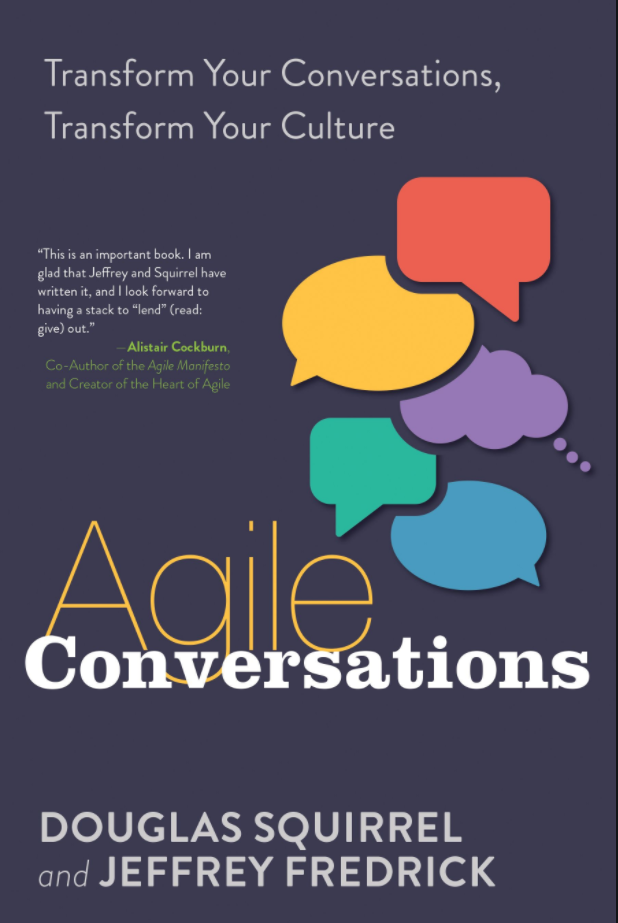n style=”font-weight:400;”>Today the book “Agile Conversations” by Douglas Squirrel and Jeffrey Fredrick is released! I was kindly given the opportunity by the publisher IT Revolution to read a beta copy, to be able to provide you with a review. IT Revolution is an upcoming publisher for IT related books, and also the “home” of Gene Kim (whose books I’ve blogged about here, and here).

Content
This book is divided into two parts and seven chapters, they are:
- Chapter 1: Escaping the Software Factory
- Chapter 2: Improving Your Conversations
- Chapter 3: The Trust Conversation
- Chapter 4: The Fear Conversation
- Chapter 5: The Why Conversation
- Chapter 6: The Commitment Conversation
- Chapter 7: The Accountability Conversation
First chapter starts off by “setting the scene”: The agile transformation is complete, the organization has bought in, the teams are trained and the processes are in place. Why aren’t things better? The key to success in not only adopting practices but having the difficult conversations that foster the right environment for those practices to work.
“When we change our conversations, we change our culture” – Douglas Squirrel & Jeffrey Fredrick
Taylorism (as Frederick Winslow Taylor wrote about 1911 in his book “The Principles of Scientific Management”) is described. Where managers told their workers exactly what to do, and not sharing any knowledge. In software, the equivalent was documentation-driven development (Waterfall). Then came Agile software development, Lean software and DevOps to disrupt and transform the software industry.
The second chapter starts by going into details about our human conversations i.e., our “super power”, that made us the dominant species on the planet. We all have conversations, many times every day, but most people don’t take the time to actually learn from them. This book tells you how!
The Four Rs are introduced:
- Record – Start by recording your conversation with another person (or group of people) in writing.
- Reflect – Look and start to learn from your recorded conversation by using the tools that are introduced in this book.
- Revise – Revise your conversation to try to produce a better result.
- Role Play – Find a friend who is willing to help, and try saying your dialogue aloud, with your friend taking the part of your conversation partner. For even deeper learning you can do 4.1 Role Reversal, and you will get to “hear yourself speaking” 🙂
Chapter 3 to 7 then in depth covers the five different types of conversation.
Takeaways
My main takeaways from reading this book, are the five types of conversation:
- Trust – “We hold a belief that those we work with, inside and outside the team, share our goals and values.”
- Fear – “We openly discuss problems in our team and its environment and courageously attack those obstacles.”
- Why – “We share a common, explicit purpose that inspires us.”
- Commitment – “We regularly and reliably announce what we will do and when.”
- Accountability – “We radiate our intent to all interested parties and explain publicly how our results stack up against commitments.”
Recommendation
This book comes with a bold statement, to fix your broken agile transformation! I think it can, but it requires a lot of hard work! I sincerely hope people will read this book and practice, at least I will, but I’m worried people will only reach for the “quick fix”.
All the best,
Tomas from TheAgileist
Source link
